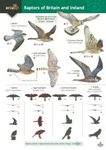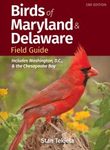![Owls Owls]()
Click to have a closer look
About this book
Contents
Customer reviews
Biography
Related titles
About this book
They are silent and beautiful. They symbolize knowledge and mystery. Owls are among the most popular and beloved animals in the world. Yet most are nocturnal, so an owl sighting is a remarkable event, one worthy of remembering and sharing with others. Award-winning author, naturalist, and wildlife photographer Stan Tekiela believes that owls are intriguing birds. He spent more than 20 years traveling across the country to observe and photograph the various species, from the Great Horned Owl to the extremely uncommon Ferruginous Pygmy-Owl. He documented every aspect of the owl's life: major events such as courtship and mating, as well as everyday activities like hunting and sleeping.
The result is a striking portrayal of these amazing raptors in Owls. Stan's extraordinary photographs depict the birds of prey in a new, unique fashion. His fascinating text is drawn from detailed research and personal observations. Presented with headings and short paragraphs, the coffee-table book is pleasurable to browse and easy to read.
"They are strikingly beautiful creatures and incredible hunters," says Stan. "Owls are among my favourite birds to study and to photograph."
Contents
- Intriguing owls
- The owl family
- Species diversity
- Owls from coast to coast
- Origins of the species
- Life span
- Unique design
- The facial disk
- Body in camouflage
- Toes and talons
- Heavyweight eyes
- 24-hour sight
- Acute eye power
- Built-in protection
- Low-light vision
- Binocular viewing
- Red-eye reduction
- Head rotation
- Head bobbing
- Bills in bristles
- The bite
- Horns and ears
- Split-second hearing
- Where is that sound?
- Ear flaps
- Facial disk designs
- Disk feathers
- Facial expressions
- Owl size
- Differences of the sexes
- Slimming to trim
- Silent flight
- Equipped to conceal
- Striking a pose
- Color collections
- Fancy footwork
- Talons in force
- Sole scales
- Feather boots to bare feet
- Palate appeal
- Diet variety
- Hunting instincts
- A friend of the farmer
- Table manners
- Diminished sense of smell
- Digestible matter
- Pellets
- Nesting fancies
- Cavity nests
- Stick nests
- Ground nests
- Nest edifices
- Reusing the nest
- Owl vocalization
- Family calls
- Night calls
- Pair calls and duets
- Bill clacking
- Establishing a territory
- Courtship
- Mating
- Egg laying
- The clutch
- Nonstop incubation
- Hatching order
- Incubation across the species
- Life in the nest
- Growing up quickly
- Sharing in the bounty
- Demand for food
- Owlet development
- Flight practice
- Branching
- Gliding and grounding
- Learning to hunt
- No free lunch
- Leaving the natal territory
- To migrate or not
- The irruption years
- Winter advantage
- Owls – exceptional birds
- Featured owls
Helpful resources
About the author
Customer Reviews
Biography
Naturalist, wildlife photographer and writer Stan Tekiela is the author of more than 190 field guides, nature books, children's books, and playing cards, presenting many species of birds, mammals, reptiles, amphibians, trees, wildflowers and cacti in the United States. With a Bachelor of Science degree in Natural History from the University of Minnesota and as an active professional naturalist for more than 30 years, Stan studies and photographs wildlife throughout the United States and Canada. He has received various national and regional awards for his books and photographs. Also a well-known columnist and radio personality, his syndicated column appears in more than 25 newspapers and his wildlife programs are broadcast on a number of Midwest radio stations.






































